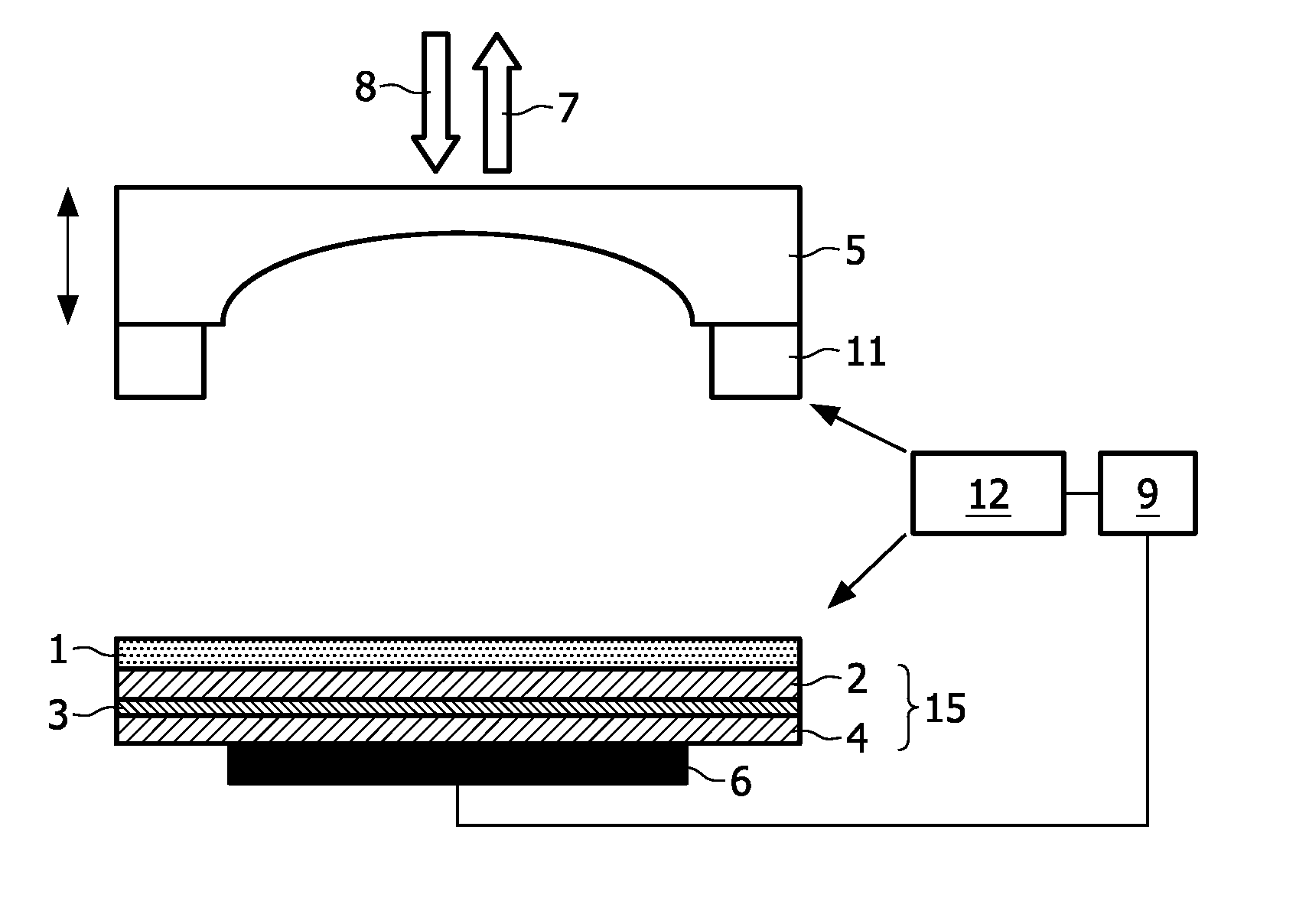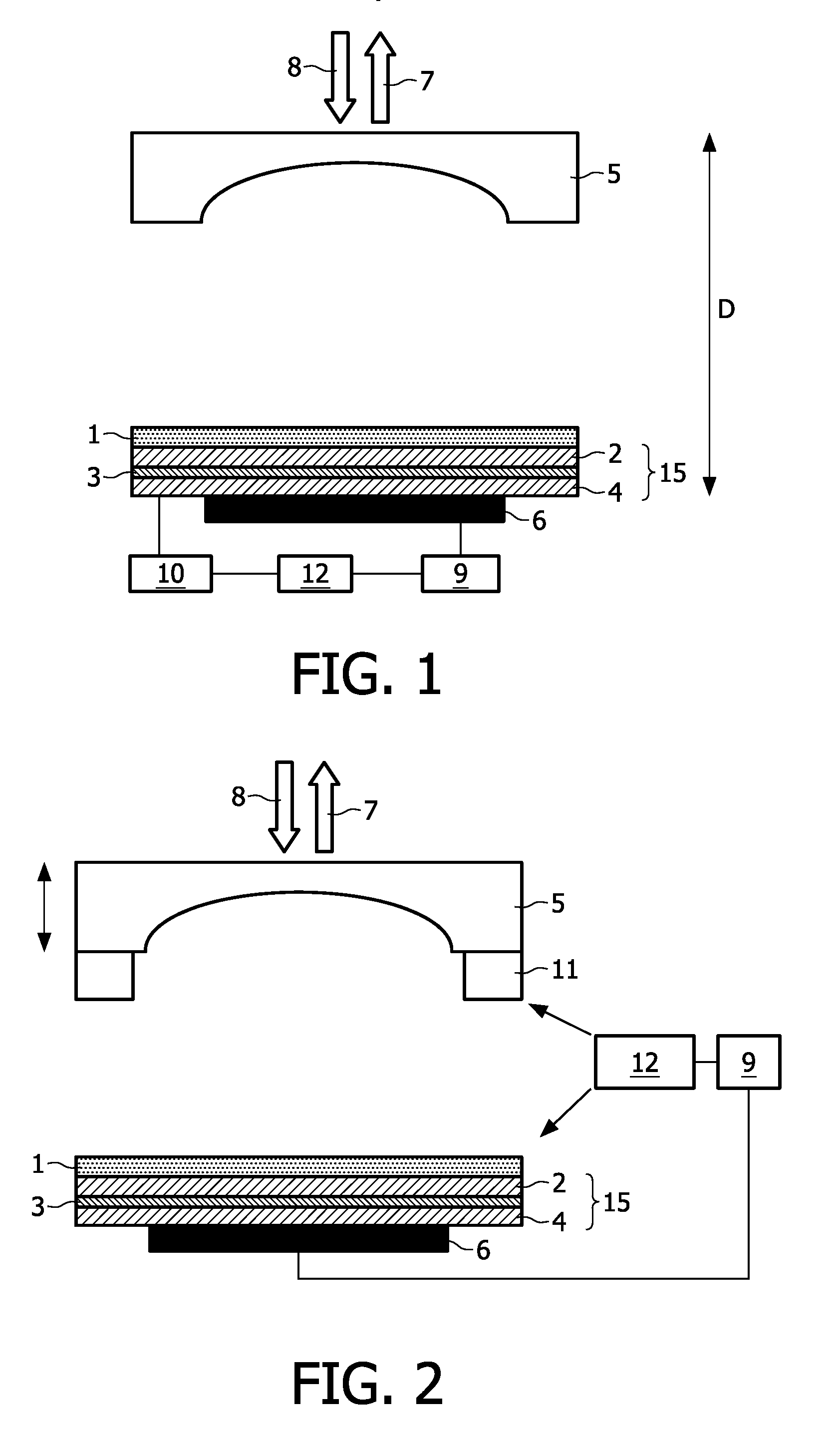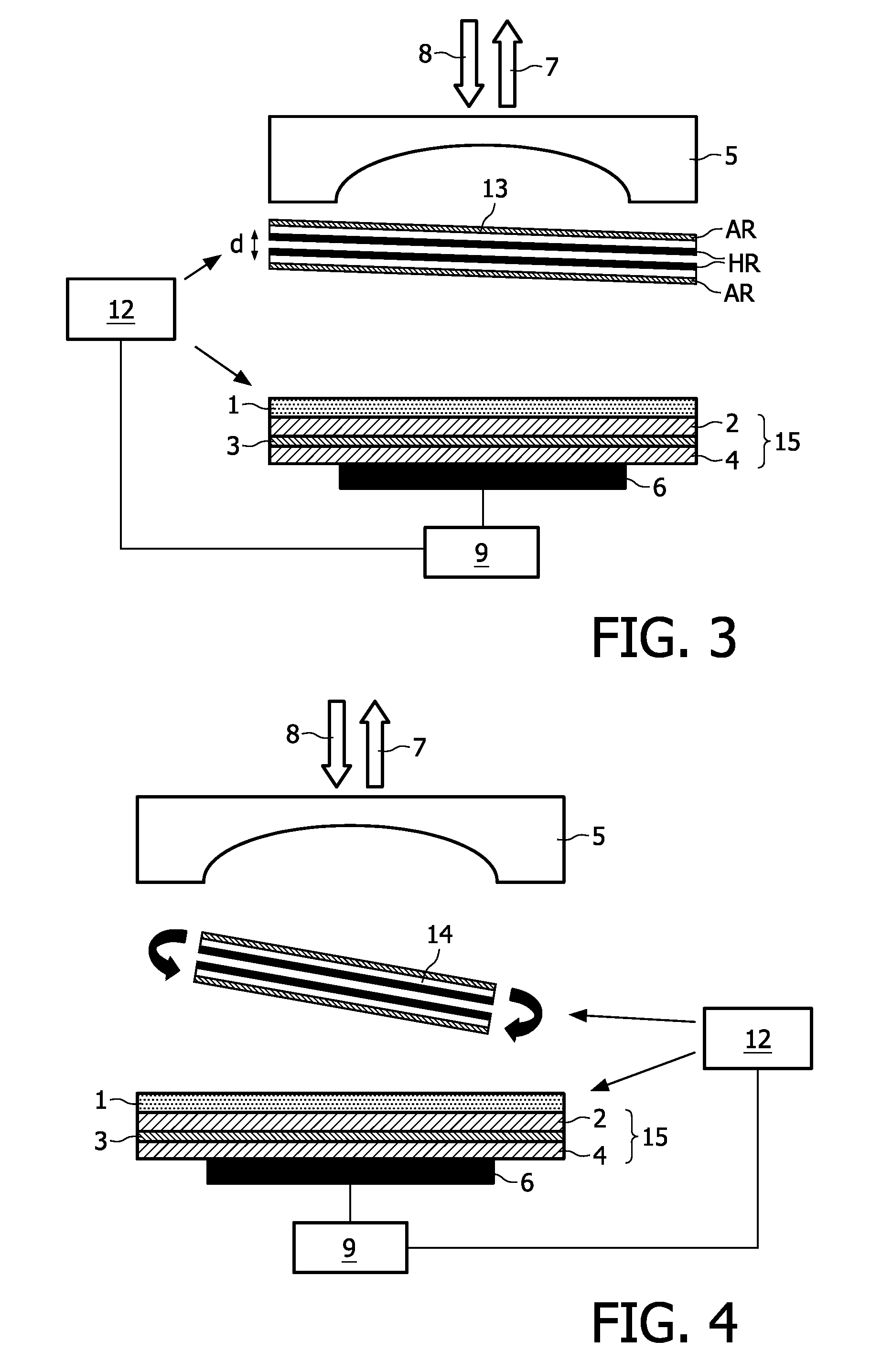Laser sensor for self-mixing interferometry with increased detection range
a laser sensor and detection range technology, applied in lasers, semiconductor lasers, instruments, etc., can solve the problems of short detection range, limited detection range of this sensor, and main drawback of laser sensors, etc., and achieve the limitation of short detection range of vcsel-based smi laser sensors to short-range applications
- Summary
- Abstract
- Description
- Claims
- Application Information
AI Technical Summary
Benefits of technology
Problems solved by technology
Method used
Image
Examples
Embodiment Construction
[0029]In the following examples of the proposed laser sensor, the VECSEL consists of a VCSEL layer structure 15 formed by an electrically pumped gain medium 3
[0030](InGaAs quantum wells embedded in GaAs) embedded between two Distributed Bragg Reflectors (DBR) 2, 4, which form an inner cavity of the laser. The lower DBR 4 is highly reflective (reflectivity preferably >99.5%) for the lasing wavelength, while the upper DBR 2 has a smaller reflectivity in order to allow feedback from the external cavity. One of the DBRs is p-doped and the other n-doped so as to allow efficient current feeding into the gain region. In this example, the lower DBR 4 with the higher reflectivity is p-doped and the upper DBR 2 is n-doped. Principally, however, doping in the reversed order is also possible.
[0031]The operating current for current injection into the gain medium 3 is provided by an appropriate power source 10 which, in the embodiment of the proposed laser sensor of FIG. 1, is connected to a sens...
PUM
 Login to View More
Login to View More Abstract
Description
Claims
Application Information
 Login to View More
Login to View More - R&D
- Intellectual Property
- Life Sciences
- Materials
- Tech Scout
- Unparalleled Data Quality
- Higher Quality Content
- 60% Fewer Hallucinations
Browse by: Latest US Patents, China's latest patents, Technical Efficacy Thesaurus, Application Domain, Technology Topic, Popular Technical Reports.
© 2025 PatSnap. All rights reserved.Legal|Privacy policy|Modern Slavery Act Transparency Statement|Sitemap|About US| Contact US: help@patsnap.com



